A Traveler's Guide to the Best Things to Do in Haridwar
Haridwar, an ancient city in the centre of the country, is famous for its religious and adventurous activities. Apart from being the country’s holy centre, Haridwar offers a fascinating journey. It would be a sin to visit Haridwar without taking a plunge in the sacred waters of the Har Ki Pauri Ghat. If you are looking for spiritual tranquillity, Haridwar offers a variety of activities. The quiet atmosphere, pure waterways, and chanting of prayers provide the ideal setting for a spiritual retreat.
The most famous and thrilling things to do in Haridwar is to visit the Har ki Pauri Ghat. The place is renowned as the ‘Footstep of God’ and is notable for its ‘Ganga Aarti.’ Every morning, hundreds of people gather here to wash their sins away. Watching the devotees’ synchronised chanting and the sound of the metal bells in the backdrop early in the morning is the most spiritually touching experience you can have in this location.
Haridwar offers many activities outside spiritual pursuits, and it is home to beautiful flora and fauna. The highest population of wild tigers and elephants may be found in the Rajaji National Park. The Neel Dhara Pakshi Vihar is the best location for those who enjoy the outdoors. It’s home to a variety of migratory birds in addition to being a vast expanse of verdant vegetation.
Here are the top 14 Things to Do in Haridwar
1. Holy Waters for a Spiritual Bath
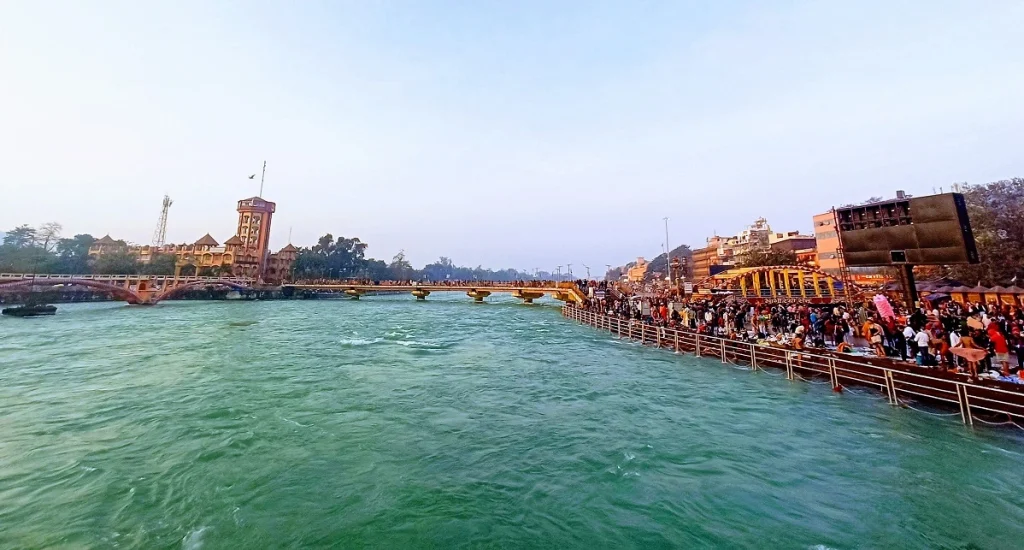
To visit Haridwar and skip a swim in Bramhakund at Har-ki-Pauri Ghat would be a serious sin. Joining throngs of pilgrims to jump into the frigid Ganga water is an experience in and of itself, particularly early in the morning, beyond any religious motivations. It is undoubtedly the most popular activity for both Indians and visitors to Haridwar.
2. Har Ki Pauri, Haridwar
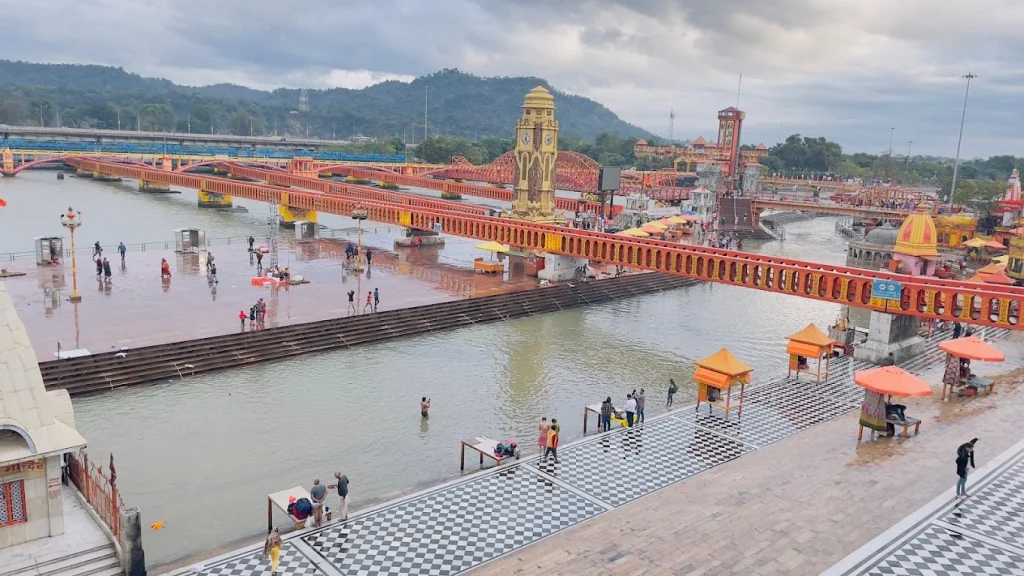
Har Ki Pauri, one of the holiest Ghats in Haridwar and all of India, is a famous spot that receives a lot of devotion from pilgrims and tourists who come to offer prayers and get the blessings of the Holy Ganga. Found in the holy city of Haridwar, one of the seven holiest sites in the nation is Har Ki Pauri, which means “Steps to Lord Shiva.” This is one of the four locations where the celestial bird Garuda is said to have inadvertently spilt the droplets of elixir, known as “Amrit,” and a bath in the Ganges is supposed to wash away one’s sins.
The river is filled with a golden hue of countless diyas offered by devotees floating along the river.
3. Ganga Aarti, Haridwar
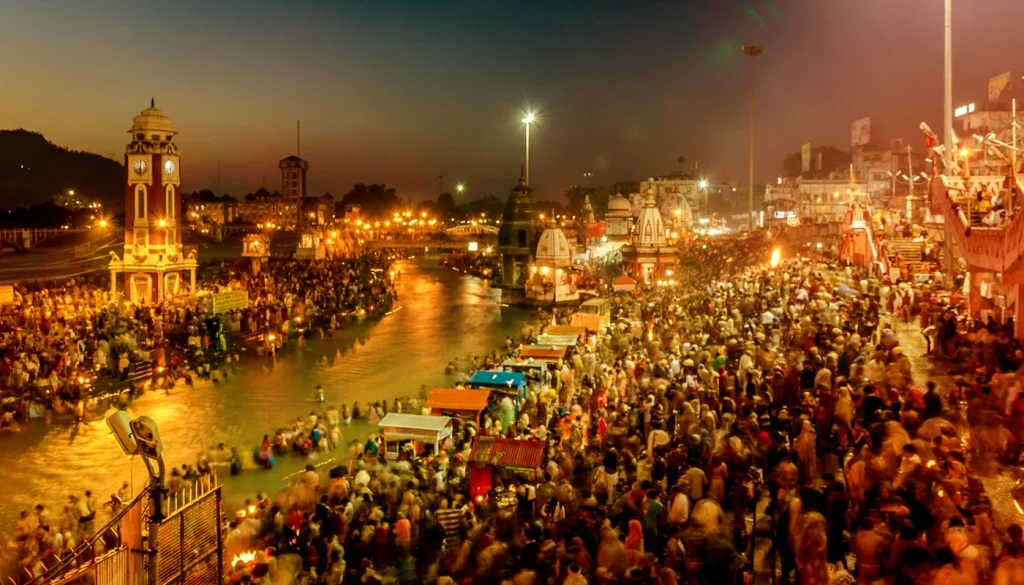
Ganga Aarti is a religious prayer offered on the banks of the sacred river Ganga at Haridwar’s Har Ki Pauri ghat. It is a light and sound ceremony that attracts tourists and devotees from all over the world, with priests performing prayers with bowls of fire and the temple bells ringing. Visitors float “diyas” (little candles) and flowers while reciting mantras and reflecting lights off the rushing river, which is supposed to be blessed by the Goddess Ganga.
4. Kushavarta Ghat
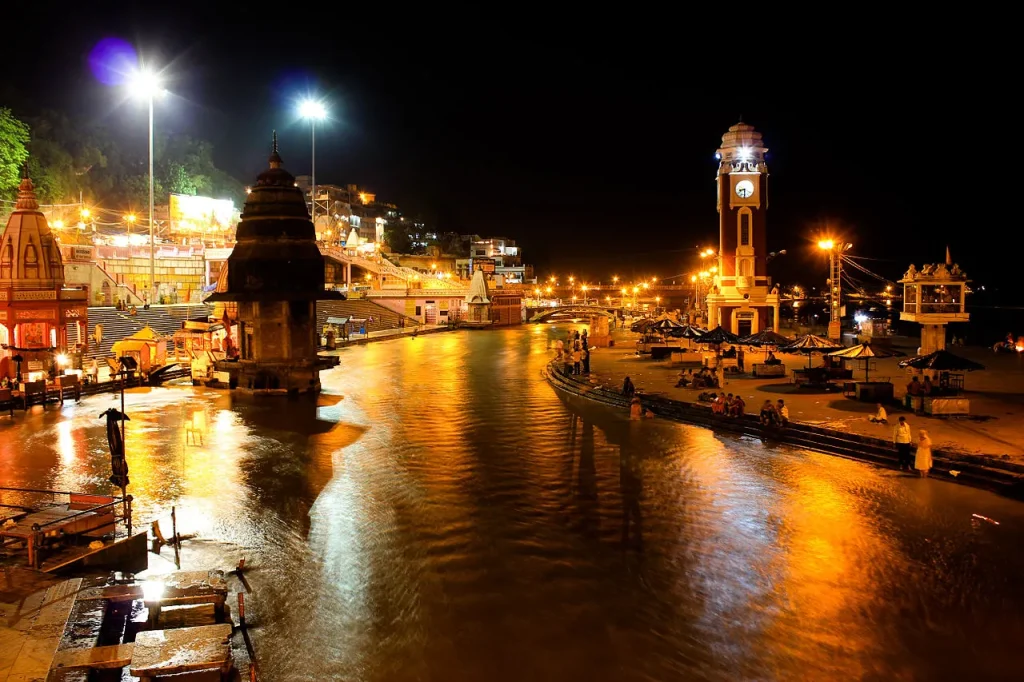
Kushavarta Ghat said to have been built in the 18th century by Maratha queen Ahilyabai Holkar, is regarded as the city’s most sacred and auspicious ghat. The deceased’s final rites and ceremonies, including the Shraddha rites, are performed on the riverbanks, following which devotees take a plunge in the Ganges’ sacred waters.
5. Chandi Devi Temple
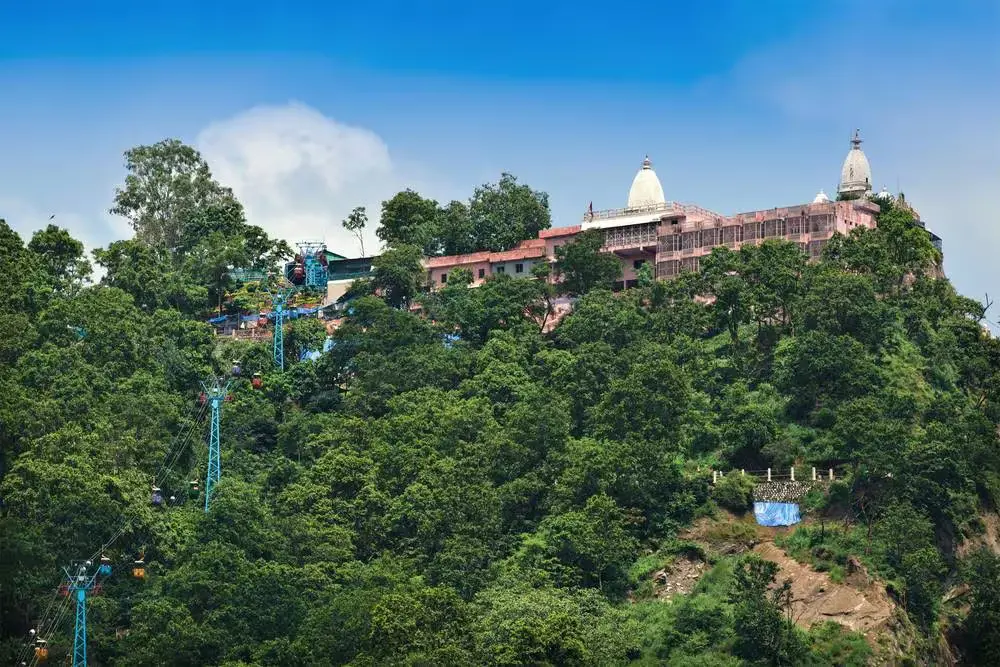
The Chandi Devi Temple in Haridwar is a lovely temple devoted to the Goddess Chanda Devi, nestled on the Shivalik Hills’ Neel Parvat. The Chandi Devi Mandir, also known as Neel Parvat Teerth, is one of Haridwar’s five pilgrimages. It is also known as Siddha Peetha, a location where devotees worship to fulfil their wishes. Because of its location, the Chandi Devi temple is a popular choice among trekking tourists. A ropeway can also be used to reach the temple’s summit, providing a thrilling perspective.
The historic beauty of Chandi Devi Temple is best enjoyed by hiking to the peak. The luscious foliage of the surroundings will undoubtedly make you sense the heavenly presence. This shrine, which is one of Haridwar’s oldest and most renowned temples, receives a large number of visitors year-round. The Chandi Chaudas, Navratra, and Kumbh Mela festivals are among the most celebratory times here, with incredible celebrations and tremendous participation at the temple. Visiting the Chandi temple during the festival season is a must.
6. Patanjali Yogpeeth Haridwar
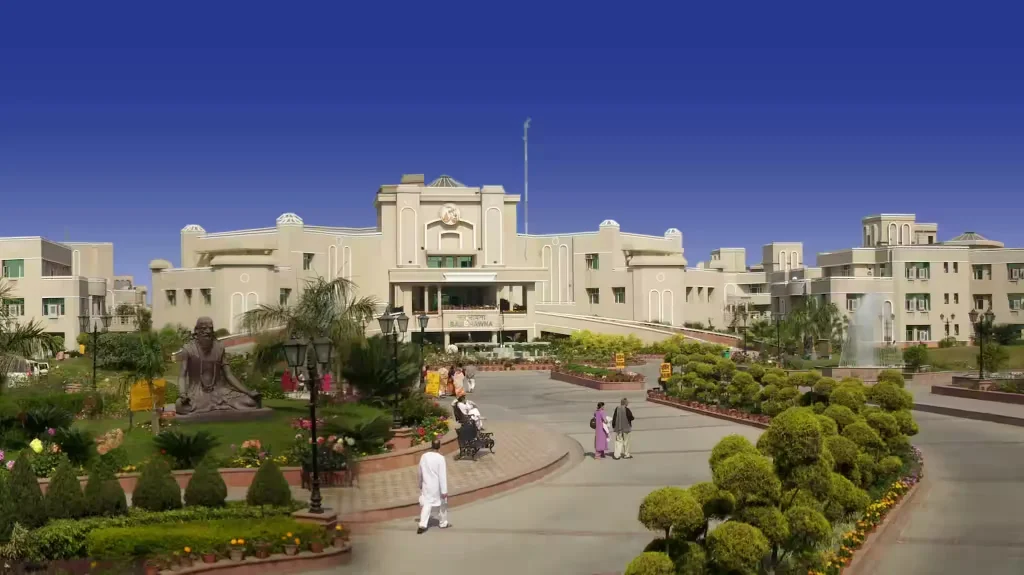
Patanjali Yogpeeth is a medical and research institute in Yoga and Ayurveda based in Haridwar, Uttarakhand. It is also known as one of India’s and the world’s largest yoga institutes. The institute is named after Rishi Patanjali, the renowned inventor of Yoga, and is Baba Ramdev’s flagship endeavour. If you are interested in Ayurveda and Yoga, this is one of the best places to visit in Haridwar.
He founded the institute in 2006 to promote and expand yoga, conduct Ayurvedic research, and manufacture Ayurvedic pharmaceuticals. People go to the Patanjali Yogpeeth for Ayurvedic treatments and drugs. It is run by the Patanjali Yogpeeth Trust in the United Kingdom. In addition to Ayurvedic therapies, there are laboratories for study and research, a restaurant, an ATM, and residential accommodations. The Patanjali Yogpeeth has two campuses: Patanjali Yogpeeth I and Patanjali Yogpeeth II. They work together to provide social services in areas such as health care, education, and other socioeconomic activities.
7. Rafting in Rishikesh

Rafting in Rishikesh is by far the best experience one can have in India. From the beautiful natural beauty to the competent expert help, the location has only the best to offer. There are several certified operators with well-established safety protocols, and Rishikesh offers bespoke camping and rafting packages. If you want a stress-free outing, operators will take care of your food, water, and rafting needs. Rishikesh gets very congested during the peak season, so bear that in mind while making your plans.
Book here Haridwar Tour Packages.
8. Shanti Kunj Haridwar
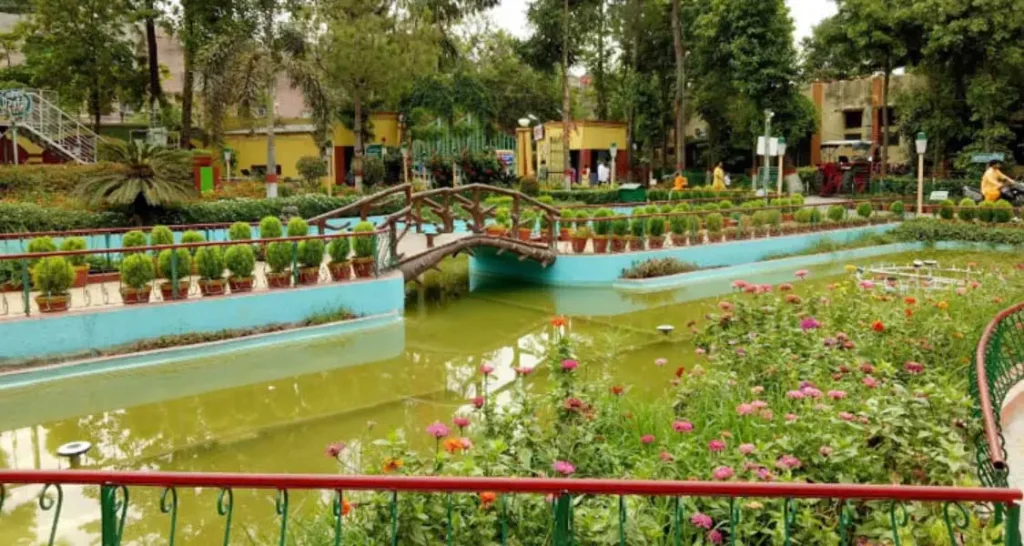
Shantikunj, a world-famous ashram and the headquarters of All World Gayatri Pariwar (AWGP) is located in Haridwar. This pilgrimage centre, which serves as a school for social and spiritual awakening, has revealed the true path and brought long-lasting satisfaction to crores of people. It is a great facility for imparting training to the masses based on divine spiritual concepts and aspires to revive Rishi traditions.
9. Mansa Devi Temple Ropeway
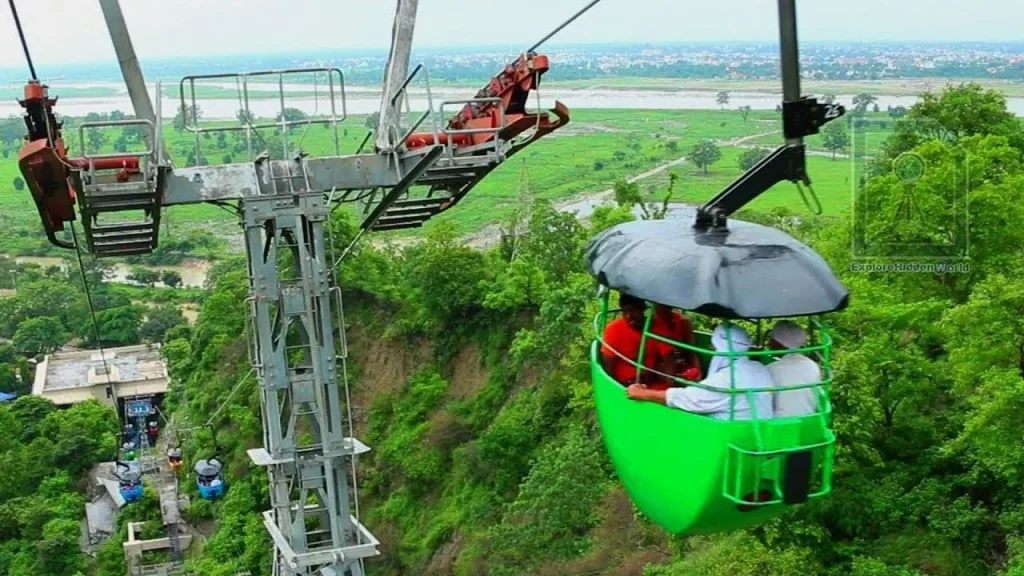
The Mansa Devi Temple is located on Bilwa Parvat in the Shivalik Hills. There are two options for getting there: trekking or via the famous ropeway. Tourists typically prefer to ascend via ropeway and descend on foot. The ropeway has also become a popular tourist attraction because of the stunning vistas and adventure it offers. The cabins are brightly coloured and offer a bird’s-eye view of the entire town, including the meandering Ganges. The ropeway can be boarded from either Chanda Devi or Mansa Devi’s off-pad, which is located in the centre of town on Upper Road. Once there, you will discover a nice bathroom and locker room. The cabins are also very safe and have a short wait period (15 minutes at most).
10. Rishikesh
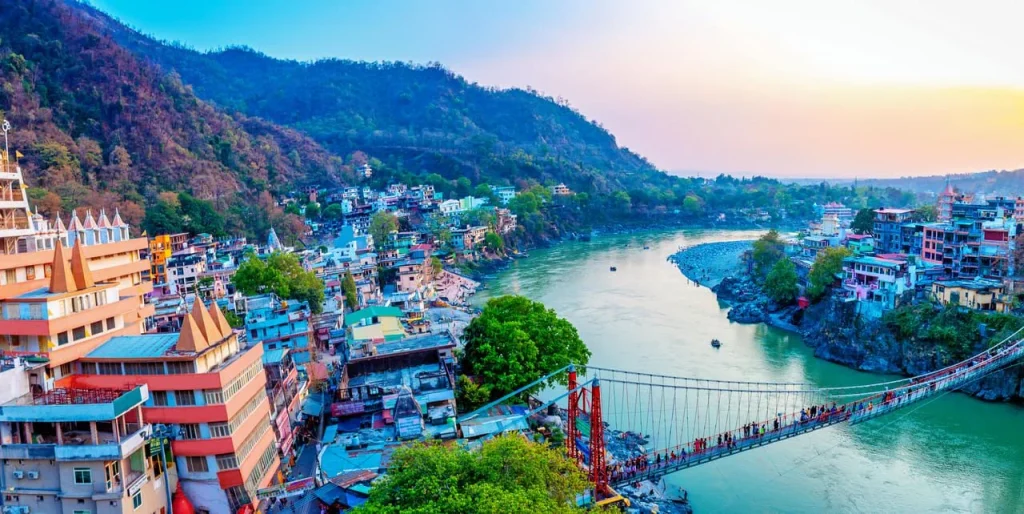
Rishikesh is a tehsil in Uttarakhand’s Tehri Garhwal area, on the banks of the Ganges, India’s holy river. This historic city, founded in the 9th century AD by Adi Shankaracharya, is related to countless mythological and religious traditions involving Lord Vishnu, Lord Bharat, and other notable sages.
Rishikesh’s picturesque splendour is amplified by its location at the foothills of the lofty Garhwal Himalayas, as well as the mighty Ganges flowing through the city. The charming city appears suspended between breathtaking riverside promenades, acres of forests, lush mountains, and brilliant blue skies, giving it a dreamlike look.
11. Bungee Jumping: A Pumping Experience

Are you looking for a thrilling adventure in Haridwar? You’ll be astonished to learn that Haridwar is famed for adventure sports like bungee jumping. It is not only a spiritual centre, but it also provides a variety of fascinating things to engage in. So, if you are searching for a pleasant weekend break, travel to Haridwar and prepare to indulge your adventurous soul.
12. Seek Adventure with Mountain Biking

Do you want to see Haridwar and Rishikesh uniquely? You can choose mountain biking, which will familiarize you with the city’s untrodden pathways and alleys. Hire a mountain bike, put on your sports shoes and helmet, and prepare to race down the alleys of Haridwar with your daring pals. Don’t miss out on these activities because they are some of the top things to do in Haridwar.
13. Neel Dhara Pakshi Vihar

Neel Dhara Pakshi Vihar is located in Bhimgoda Barrage in Haridwar and boasts a diverse flora and fauna. A famous tourist destination, the site provides unusual bird-watching chances with a panoramic vista of the Shivaliks in the background. The location is Famous for its ridiculously stunning scenery and is a must-see if you’re in the area.
14. Bhuma Niketan
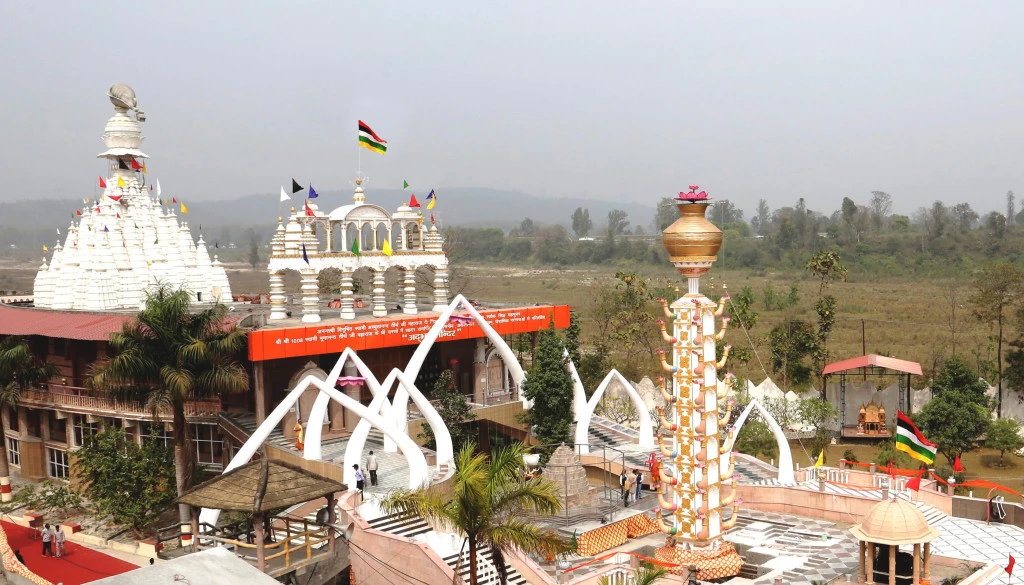
Bhuma Niketan, located on the Saptasarovar Marg, is a prominent pilgrimage destination in Haridwar. The temple contains wonderful idols of various gods and goddesses. The sculptures of Shiva and Parvati, which adorn the shrine’s entrance gates, are the temple’s main attraction. Bhuma Niketan is surrounded by water fountains and verdant gardens, and it functions as both a temple and a sanctuary for visiting pilgrims.
Swami Sr Bhumananda Teerth Ji founded the Bhuma Niketan, which is currently led by Swami Achutyananda Teerth. As a benevolent trust, it supplied food and shelter to the elderly and destitute, as well as medical camps for the weaker sections of local villages.
Conclusion
Haridwar is a city in the Indian state of Uttarakhand, known for its rich cultural heritage and spirituality. When visiting Haridwar, there are several things you must do to make the most of your trip. Witnessing the Ganga Aarti at Har Ki Pauri is a mesmerizing experience that should not be missed. The city is also home to various temples such as the Mansa Devi Temple and Chandi Devi Temple, which are popular among pilgrims and tourists alike. Additionally, exploring the local markets to shop for traditional artefacts and attending the Kumbh Mela, held every 12 years, are unique experiences that offer insights into the city’s vibrant traditions. Lastly, indulging in the local cuisine, especially the famous street food, is a must-do for food enthusiasts. For a seamless and memorable trip to Haridwar, consider availing of tour packages offered by reputable companies like Pluto Tours.
You can also check our Haridwar Tour Packages.
People also ask about Things to Do in Haridwar
1. What is the most famous thing about Haridwar?
The most famous site in Haridwar is certainly Har ki Pauri, a holy ghat on the Ganges River that hosts evening prayer rites known as aartis. Another notable attraction is the Mansa Devi Temple, which is located on a mountaintop overlooking the city.
2. What time is Ganga Aarti in Haridwar?
The daily Ganga aarti at Har Ki Pauri in Haridwar begins at 5:30 a.m. in the summer and 6:30 a.m. in the winter. The daily Ganga aarti begins at 5:30 p.m. in the winter and at 6:30 p.m. in the summer. The timing to execute rituals varies between summer and winter, depending on sunrise and sunset.
3. Which item is popular in Haridwar?
Haridwar’s achar or pickles have certain unique characteristics. To see the difference between ordinary and homemade pickles, you must buy and taste them. They are traditionally produced.
4. What is the biggest market in Haridwar?
Moti Bazaar is the main market in Haridwar. It is an appealing location with numerous stores selling home items, handicrafts, blankets and winter apparel, Hindu worship and ritual supplies, brass idols of Hindu deities, toys, and so on.
5. What is the specific food of Haridwar?
Chole Bhature is a must-try dish in Haridwar. This wonderful recipe blends fluffy bhature, a fermented wheat flour bread, with spicy chickpea curry. The bhature is deep-fried to perfection, with a crispy outer layer and a delicate, fluffy inside.
6. Who is the god of Haridwar?
Haridwar is also considered to be sanctified by the presence of three gods: Brahma, Vishnu, and Mahesh. Lord Vishnu is claimed to have left his footprint on the stone situated on the upper wall of Har-Ki-Pauri, where the Holy Ganga always touches it.
7. Why is Haridwar so famous?
It houses the headworks of the Ganges Canal system. Haridwar is one of Hinduism’s seven holiest towns and a prominent pilgrimage centre. It has been known by numerous names; originally, it was named Kapila after the sage who formerly lived there.
